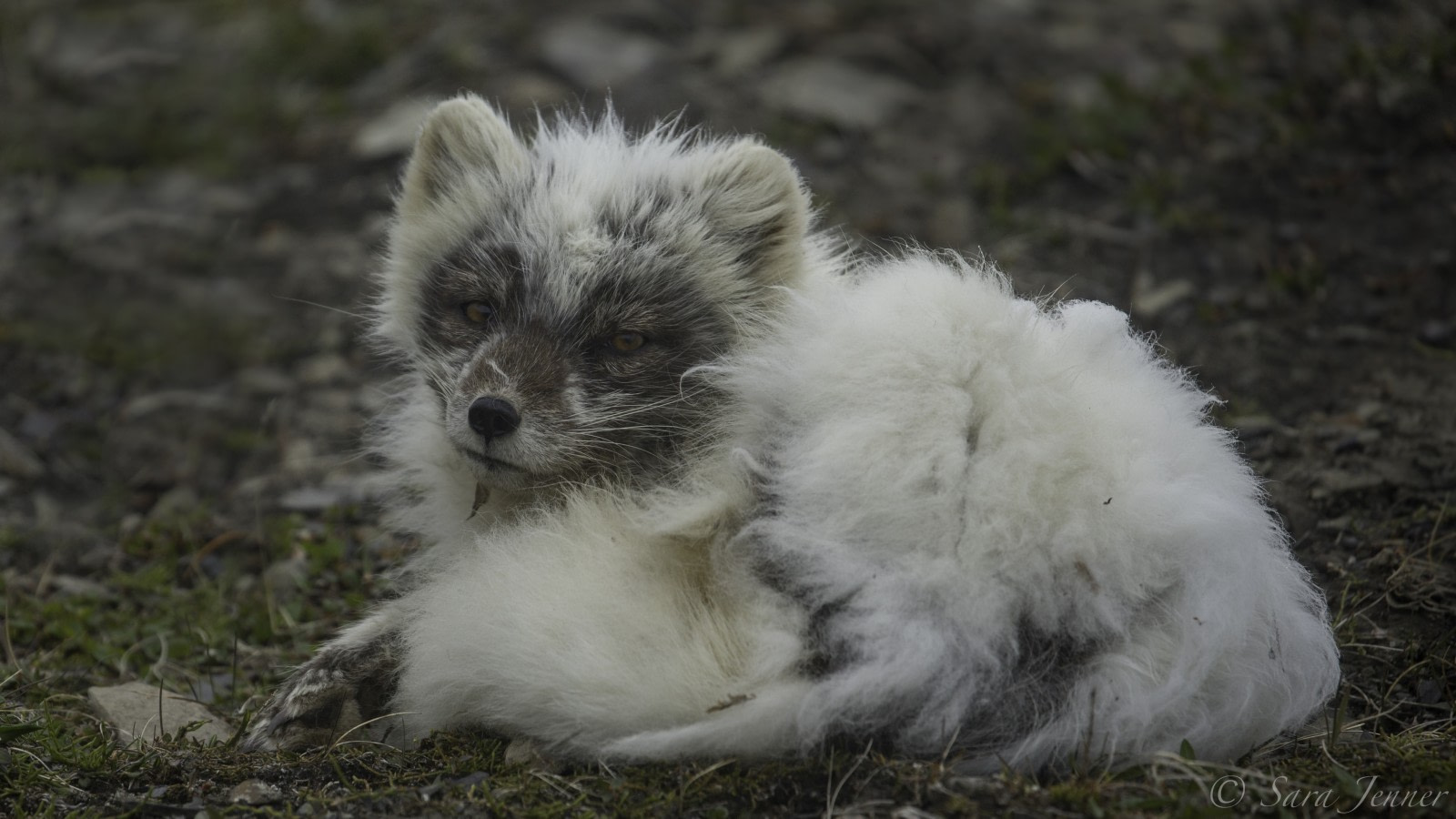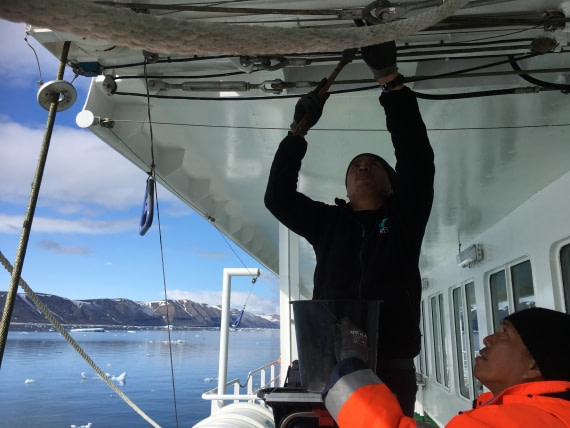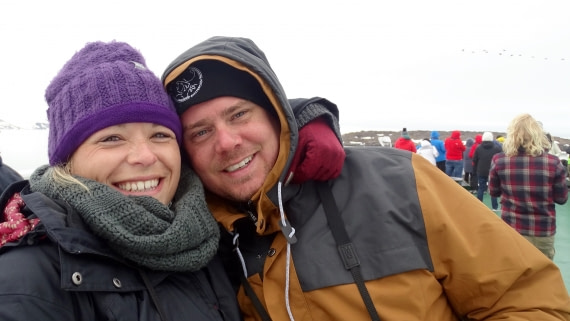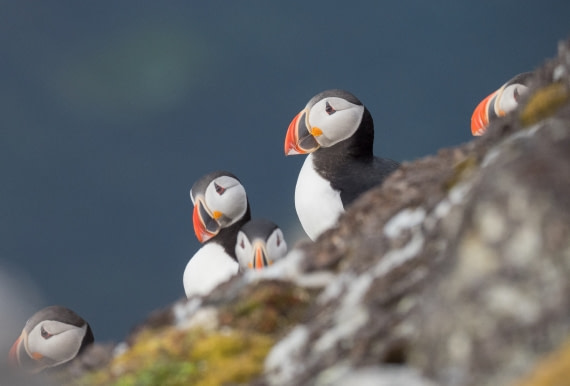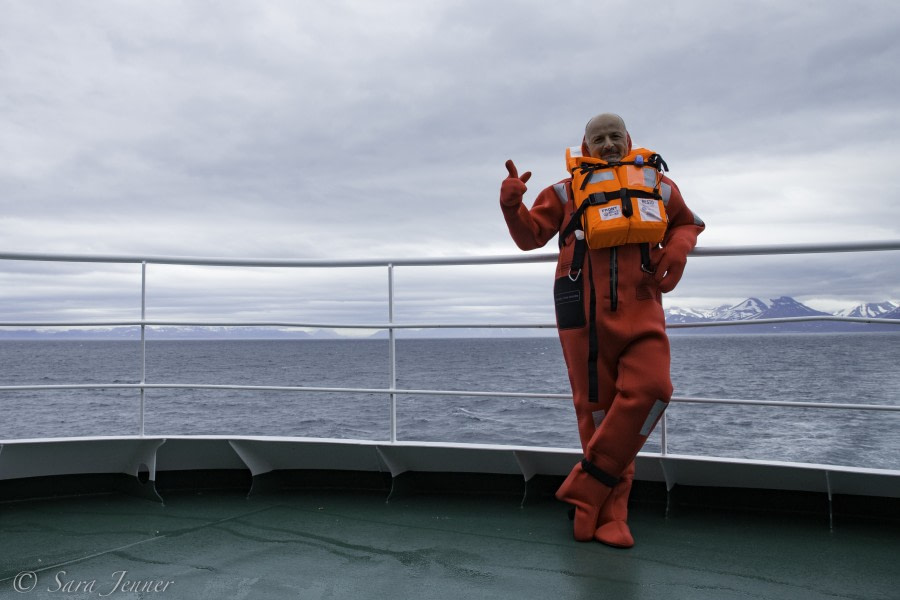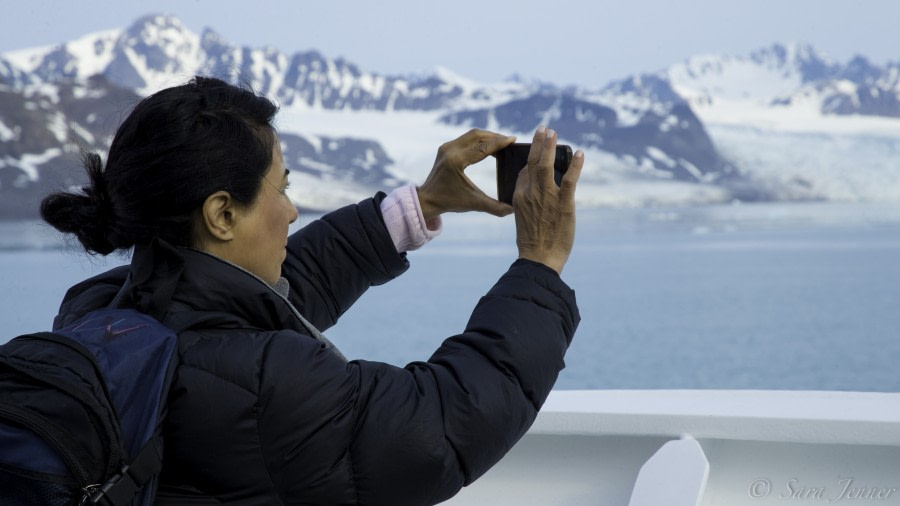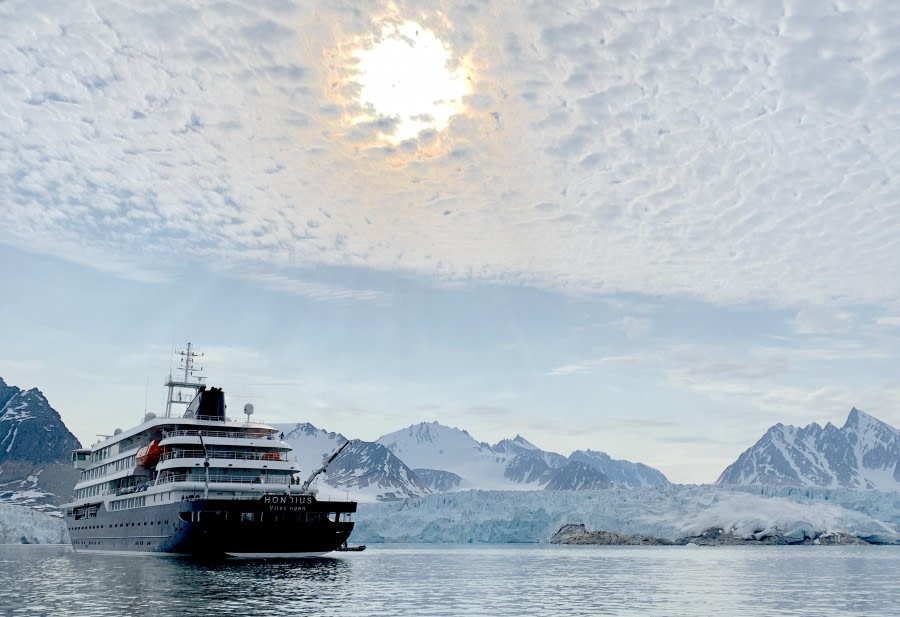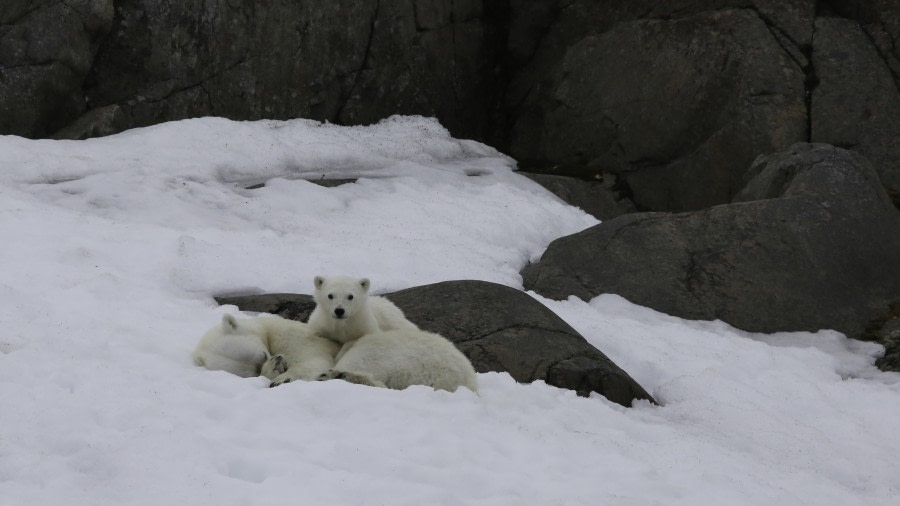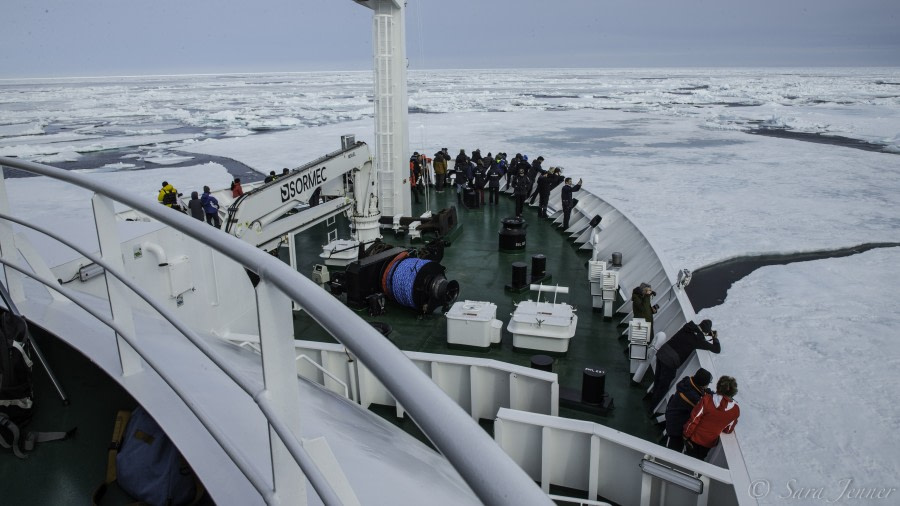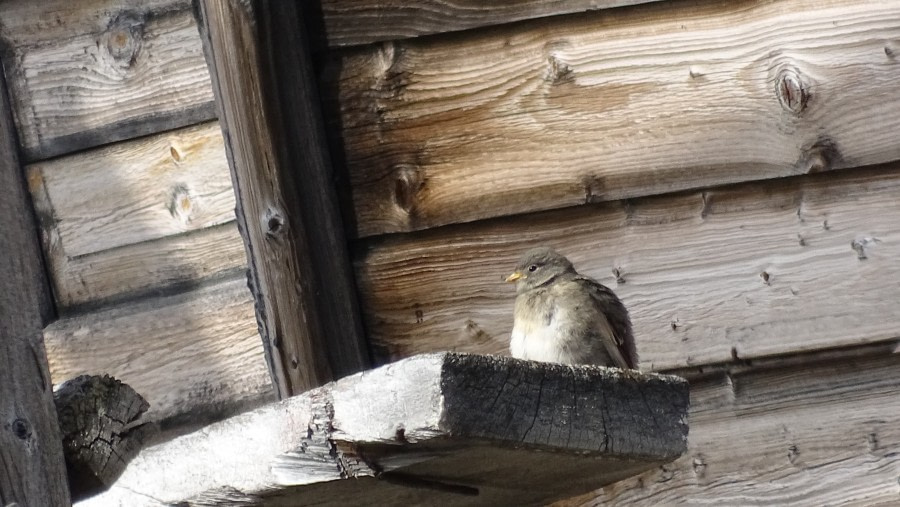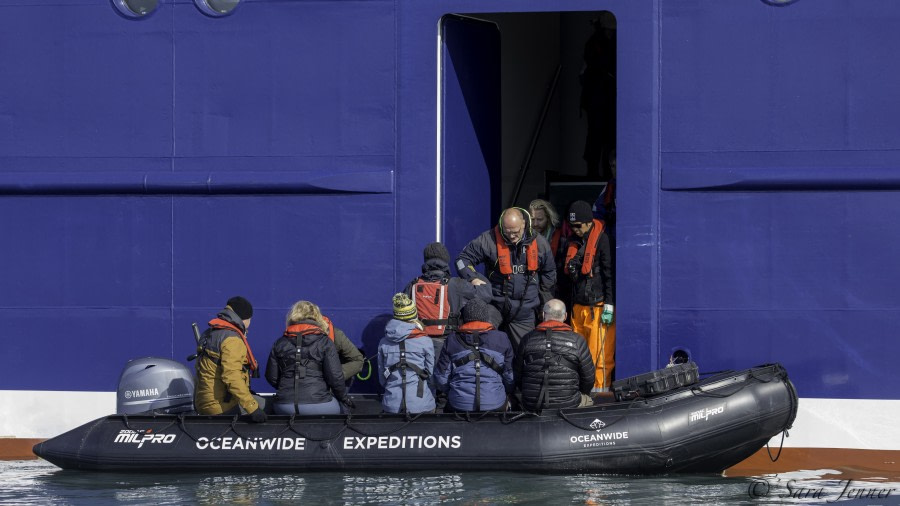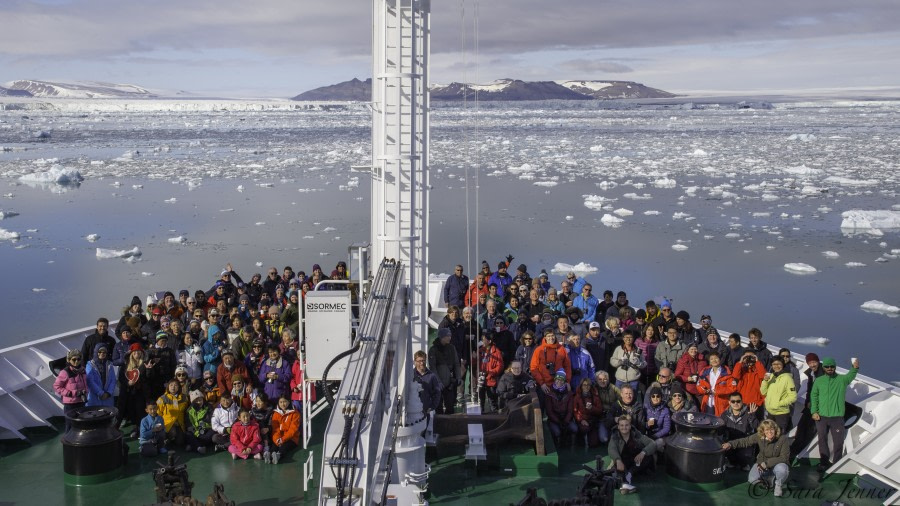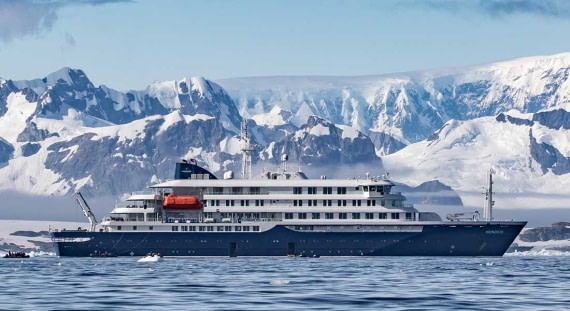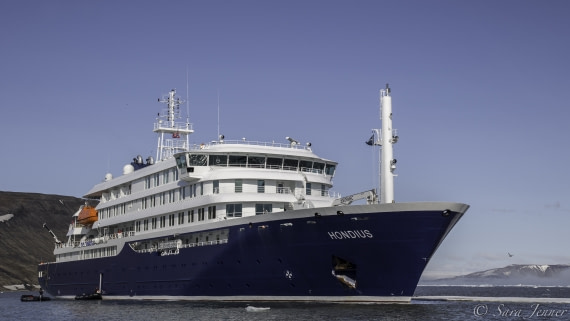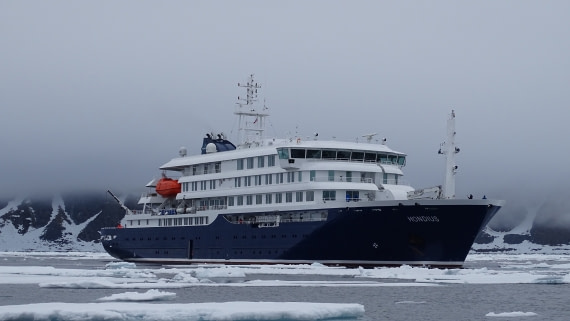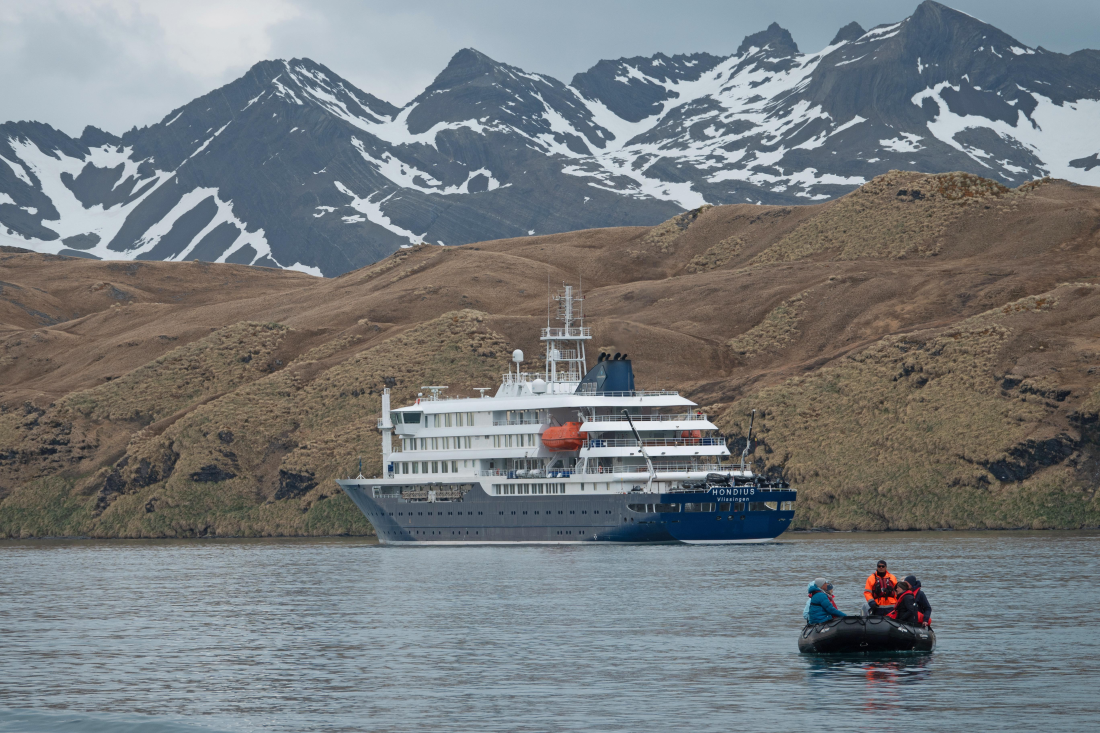| Datum: |
12.07.2019 |
| Position: |
77°56’.0 N, 020°28’.1 E |
| Wind: |
SW4 |
| Wetter: |
Overcast |
| Lufttemperatur: |
0 |
Today was going to start with an early activity, a landing at Diskobukta with hikes between high cliffs home to a huge Kittiwake colony.
Weather conditions were great, no swell, no wind, blue sky but as Captain Aleksey and his team came closer, they had to cancel the operations due to huge amounts of ice blocking the landing site. Instead of getting ready after breakfast, we all were invited to the lounge for a unique lecture on Plankton by Chloe, Pierre and Szymon. With samples taken from the ocean just the day before with a plankton net, Chloe put them under the microscope attached to the projection screen so everybody could see it. We were amazed by the findings. Little crabs, copepods, jellyfish, worms and more! Pierre informed us with the importance and the secret amazing life of krill. Leaving us in awe about what we just had learned about the importance of plankton, Raph announced the presence of 2 Polar bears on the beach.
We all made our way outside, with some of us not even wearing a coat due to the warm temperatures. There they were, a mother and a 2-year-old cub walking on the beach along the shoreline at Dunerbukta. A beautiful and joyful sighting. Eventually, the bears moved up the mountain, walking out of sight for most of us.
Meanwhile, the staff lowered 13 zodiacs to take everybody who was interested on a special zodiac ice cruise. Within a very short time, all the guests got ready to embark and take off in superb conditions with their guides. Blue sky, no wind, amazing scenery with ice bergs looking like unique sculptures drifting around us. As we cruised in between the ice, the fulmars and kittiwakes joined us over our heads. A strong current made some pieces of ice move fast and gave us a different scene wherever we drove. The fog moved in at a few places, and looking over our shoulders, the Hondius looked like a pirate ship dooming out of the clouds. Endless amount of ice pictures were taken and with these weather conditions nobody wanted to go back, but of course Michael and his team prepared a lovely lunch so we made it back in time. A great lunch as usual and how appropriate, ice cream for dessert.
No time for an after-lunch dip, as the 2nd officer Diederik made an announcement from the bridge that we had a pod of beluga’s in front of the ship. Again, an amazing encounter of more than 20 individuals with younger calves who have a grey coloration, unlike the white adults.
Still looking at the beluga’s, suddenly a male polar bear appeared on portside of the ship. The guest at the bow could not believe their eyes. The polar bear changed his direction and so did the captain, making way for the master of the arctic. Looking at a polar bear swimming was amazing and it got even more exciting when this majestic male decided to climb on a piece of ice. After climbing on the ice flow, he gave his fur a good shake and dipped back in, continuing his voyage, and so did we, heading for the end of the Negribeenfjord.
Such a greet afternoon needs to be celebrated, so Michael and his hotel staff invited everybody on the front deck for hot chocolate, whipped cream and an optional shot of kalua. Closing it off with a cheery group picture. The only reason to go inside on this lovely day was that we left the beautiful bay and Melissa gave a lecture on Polar bears and their reproduction, something nobody wanted to miss out on.
On this expedition we were treated with many amazing sightings of polar bears and their behavior so a “I saw a Polar Bear Happy Hour” was organized by the hotel staff, much appreciated by lots of guest.
With the sun still high in the cloudless sky, we made our way to the dining room, to have a delicious plated 3 course meal. Meanwhile, looking out into the ocean flat as a mirror, this day was one of many to embrace.
